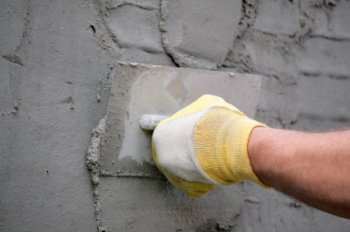Home Building Articles
Improved Stucco Systems
July 08, 2009

Think stucco finish can stop rainwater and moisture in its tracks? Think again.
Stucco finished are actually porous, which means that water can get sucked up through
the pores and enter into the walls. What's more, stucco can crack over time, practically
inviting water to enter the home, damage the building materials, and potentially
produce mold.
When designing a stucco wall system, it's critical to assume that water will get
past the stucco and enter the wall system. The best practice is to apply two layers
of moisture protection, either asphalt-impregnated felt paper or housewrap, against
the sheathing of the house.
It's critical to use two layers to create a drainage plane. In the past, builders
used only one drainage plane, like housewrap. Because it's bonded to the stucco,
water that gets past the stucco will wet the housewrap, which deteriorates its drainage
properties and renders it useless. In addition, the wet housewrap can in turn cause
the framing materials to get wet. Wet materials that can't dry out can deteriorate
and become a food source for mold.
In addition to two layers of moisture protection, it's also critical to install
weep screeds behind the stucco finish and to ensure flashing around windows, doors,
and penetrations are integrated with the drainage plane. The first layer of moisture
protection should be fastened to all Exterior wall surfaces. Make sure to install
it shingle-fashion. Start at the lowest point on the wall, with newly placed material
overlapping the preceding material. For example, a roofer begins applying shingles
at the roof's edge, lapping each successive course over the preceding course all
the way to the eaves. Also, make sure that it's continuous, as gaps will allow water
to infiltrate. For step-by-step guidelines on creating a continuous drainage plane,
visit BuildIQ's website.
Next, install weep screeds at the bottom of each wall. Make sure they're installed
behind the first layer of the drainage plane. The second layer of housewrap or building
paper should be applied as a backing onto which stucco is applied over metal lath.
The stucco finish should also terminate with a weep screed at least eight inches
above grade. By installing a continuous drainage plane consisting of two layers
of housewrap or building paper, using weep screeds, and ensuring flashing is integrated
with the drainage plane, you'll create a water management system designed to stop
water before it can enter and damage the home.
*Source: HGTVpro.com